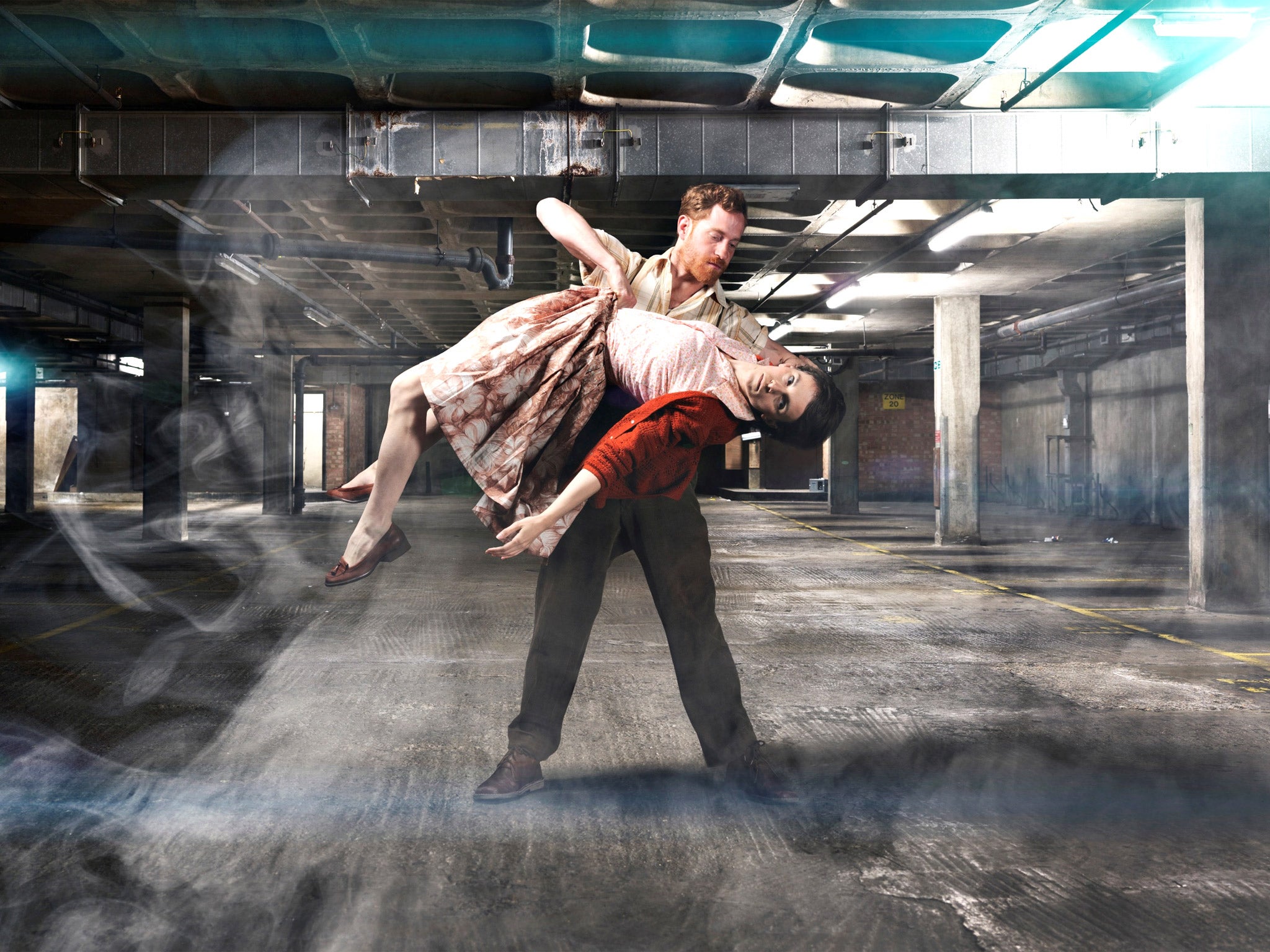Why theatre's alternative space invaders need to leave their comfort zone
Plus: Nostalgia at the V&A needs a personal playlist and Rh-app-sody for the iPad

Does your heart sink or lift when you hear that a theatre performance is to be in an "alternative space". If it's the latter then you would seem to be aligned with the spirit of the moment. Alternative spaces – whether it's the church that has been fitted out as a jousting yard for Kenneth Branagh's Macbeth or the Royal Mail sorting office that provides the maze-like set for Punchdrunk's new show, The Drowned Man: a Hollywood Fable – are very voguish right now. The owners of redundant industrial buildings used to fear invasion by vandals or mice. These days they're more like to find that they've been hit by an infestation of site-specific performers, gamely doing their bit to tug an audience out of its comfort zone.
And it isn't just empty spaces either. Last week, I went to a community centre in Haggerston to see a play, a sentence that might lead you to expect a cast whose average age was 15 and an audience of besotted parents. In fact, Annie Baker's Circle Mirror Transformation offers some of the best acting available in London right now, since it's part of the Royal Court's Theatre Local season, which aims to get theatre out of the West End and into unexpected spaces.
There's a good rationale for the site in this case since Baker's play is also set in a community centre. So you could reasonably take the scuffed staircase and air of civic utility that you encounter on the way in as tuning you up for the drama that takes place inside, which concerns an adult acting workshop. Similarly, the accidental sounds of life that drift in through the open windows sit ambiguously between distraction and vivid effect. It's certainly the done thing to read everything that happens as a kind of aesthetic bonus and – discussing the play on the radio the other day – I tacitly went along with the idea that something special and unique had been delivered by getting out of a purpose-built theatre.
Thinking about it later though I found myself wondering whether I really believed that, or was simply going along with a consensus. Something similar happened when I went to Adam Curtis's show with Massive Attack, an event that also generated a lot of hype about the "astonishing space" and "dramatic interior" of Manchester's Mayfield Depot.
Inwardly, I'd thought, "Isn't it just a really big shed?" And while size and shedness isn't nothing in these things, I can't help feeling that we often talk ourselves into enthusiasm as we shuffle into place, even as we're secretly longing for a comfortable seat with a number on its back. The problem isn't discomfort though. It's the sense – with quite a bit of site-specific work – that the building is going to do work that really should be done by a playwright or a director. There's a kind of double-bluff at work. A place this raw, the implication runs, couldn't possibly serve you up something overcooked. Just look at it – it's gritty, it's urban, it's real.
I can't entirely shake off the sense of self-congratulation that sometimes attends these events either. "Open-toe shoes and high heels must not be worn for this event" read the small print on the website for Massive Attack v Adam Curtis. Edgy, no? It's not a gala night out, you know. You're going to be walking on the wild side and you need to come properly shod. And while no such strictures attended the performance at Circle Mirror Transformation, I'm sure I could detect a faint sense of expeditionary excitement in the audience at finding themselves so far away from a branch of Pret A Manger. They had passed through untrodden post-codes to get there and they weren't going to let the achievement pass without an internal pat on the back.
Perhaps I'm being grumpy. Perhaps I'm just space-blind, in the way that you can be tone deaf. But I'd be happy to trade novelty of location for just a little more novelty in what takes place within it.
Nostalgia needs a personal playlist
I think my favourite costume in the V&A's Club to Catwalk exhibition was a jaunty number by Leigh Bowery, constructed from Lycra and featuring a dangling kind of genital sleeve at the crotch. "People were shocked when I wore it to Tesco's," one of Bowery's friends is recorded as saying. How narrow-minded of them. The exhibition itself is a little disappointing, though for anyone of a certain age it should deliver a satisfactory jolt of nostalgia and rueful memory. One word of advice, though. The sound levels are horribly unclubbable. Compile your own 1980s playlist, put on headphones and turn the volume up. You'll have more fun.
Rh-app-sody for the iPad
I downloaded Liszt's Sonata in B minor the other day – not as an mp3 file but as an app. I was curious about Stephen Hough's version of Liszt's masterpiece for the iPad, which attempts to use the technology for something more than mere playback. It turned out to be captivating, scrolling the score along the bottom of the screen in real time and offering a choice of other screens and a running commentary, vocal or subtitled. Most enticing, for the non-playing consumer, is a graphical representation of the score, in which coloured "notes" of varying lengths descend towards the keyboard. The developers call it the NoteFall. But any video gamer will recognise it instantly as a boss-level round of Piano Hero.

Join our commenting forum
Join thought-provoking conversations, follow other Independent readers and see their replies